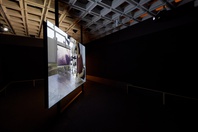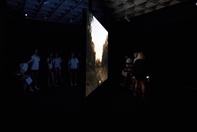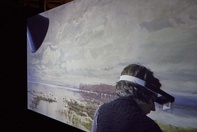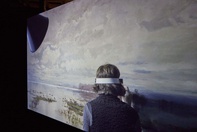Gabriella Hirst
Berlin, Germany
2021
Displayed 2021 at Art Gallery of New South Wales
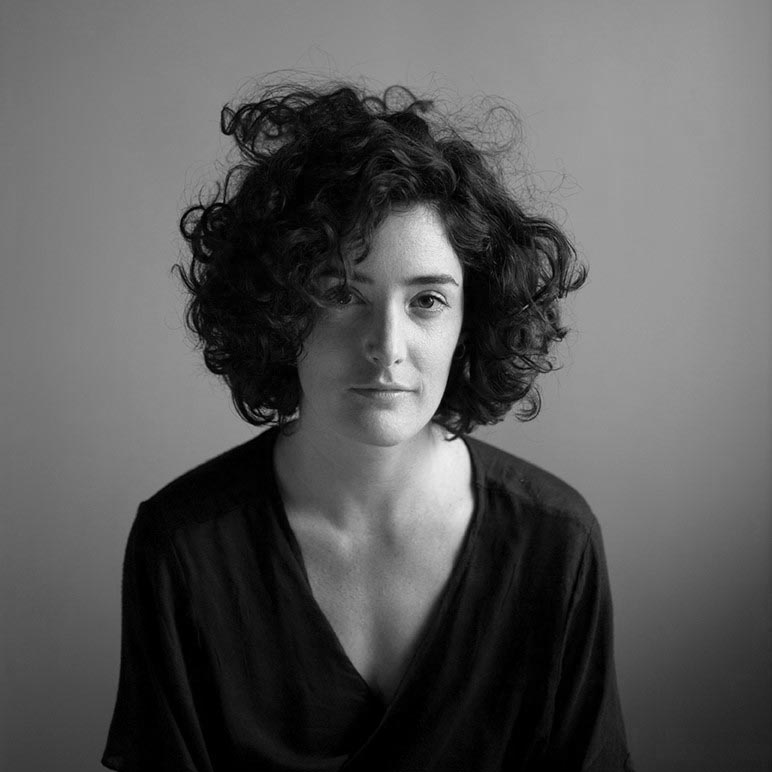
Gabriella Hirst
Born 1990, Cammeraygal Country, St Leonards, New South Wales. Lives and works in Berlin, Germany
Gabriella Hirst works primarily with moving image, performance, and with the garden as a site of critique and care, however her practice incorporates diverse methodologies and media including painting, ceramics, text and sound. Hirst’s practice and research explores connections between various manifestations of capture and control – spanning plant taxonomies, landscape painting, art conservation and nuclear history. She has a strong interest in Romanticism, and is interested in processes of unlearning, specifically in untangling how European art history conventions are embedded within mainstream visual culture.
Artist text
by Anne Gérard-Austin
The impression of serenity when encountering the first screen of Gabriella Hirst’s video installation on the Baarka/Darling River region owes much to the delicate attention she has given to these ‘portraits’ of Country in motion, stunningly composed and framed in the tradition of European landscape painting. The illusion, however, doesn’t linger, and one is soon confronted with the dire drought of the Darling River system – a dramatic consequence of ignorant longstanding land and water mismanagement, exacerbated by human-induced climate change.
Projected on the reverse side of Hirst’s 2-screen installation is a filmed account of the meticulous care taken to restore the highly praised painting The flood in the Darling 1890 (1895), by Australian colonial painter W.C. Piguenit, in the conservation laboratory of the Art Gallery of New South Wales. A celebration of the beauty and power of nature, the painting depicts the lower Baarka in a state of natural flooding that the painter witnessed as it inundated the outback near Bourke in 1890. The flood in the Darling 1890 is a history painting in that respect. But it occupies a prestigious place in the traditional hierarchy of genres in that it also accurately records the landscape that Aboriginal river people had protected for so long, at the brink of ecological transformation. Reflecting a discrepancy in the settler’s understanding of the place, this flooding event was indeed the impetus for the introduction of water management, restructuring and framing of the river system, ecologically devastating to natural irrigation flows. (1)
The two channels of Darling Darling (2021) are played simultaneously, back-to-back, leading the viewer to experience one screen at a time, and yet both films are overlaid with the other’s soundtrack. While the spectator dives into a contemplative mood brought about by the subtle changes on the quiet Baarka side, their meditation is interrupted by the distinctive melody of Australian birds now intertwined with the sound of scraping and beeping in the art conservation lab. Creating a space for brief collapse between image and environment, space and time and connecting the two sides of the same story, the sound leakage suggests the human intervention since the early years of colonial occupation to domesticate and contain the water flows through various framing devices. In pre-occupation Australia, the boundaries between land and water were dynamic and porous. With Hirst, water can metaphorically leak again out of containment.
Paradoxically, the signs of recovery and regeneration might sit in the present-day world of the conservation lab. In this ultra-feminine and discrete environment dictated by slowness and patience, Hirst offers a beautiful tribute to this bodily and specialised profession, which today proves to be virtuous in addressing the risks of environmental deterioration due to climate change, through new research. In the lab, objects of care and value become organic materials and fragile things again, part of one common ecosphere to protect. Along with Australian women artists such as Ruby Davies, Catherine Rogers and Merilyn Fairskye, who have been throwing much-needed light on the ecocide of the Baarka in recent years, Hirst’s Darling Darling powerfully embodies Sydney-based art historian Catriona Moore’s predication:
In Australia, the landscape tradition has been thoroughly modified by the forces of Indigenous knowledge, scientific research and environmental activism. In turn, art continues to make us grasp the fact that we are ourselves part of a threatened nature. (2)
(1) For a history of government approaches to the river, see Margaret Simons, ‘Cry me a river: The tragedy of the Murray–Darling basin’, Quarterly Essay, no.77, March 2020, pp.1–114.
(2) Catriona Moore, ‘Not just a pretty picture: Art as ecological communication’, in Gavin Birch (ed.), Water Wind Art and Debate: How Environmental Concerns Impact on Disciplinary Research, Sydney University Press, Sydney, 2007, p.392.
Artist's acknowledgements
Commissioned by the Ian Potter Cultural Trust under the Ian Potter Moving Image Commission for exhibition by the Australian Centre for Moving Image (ACMI)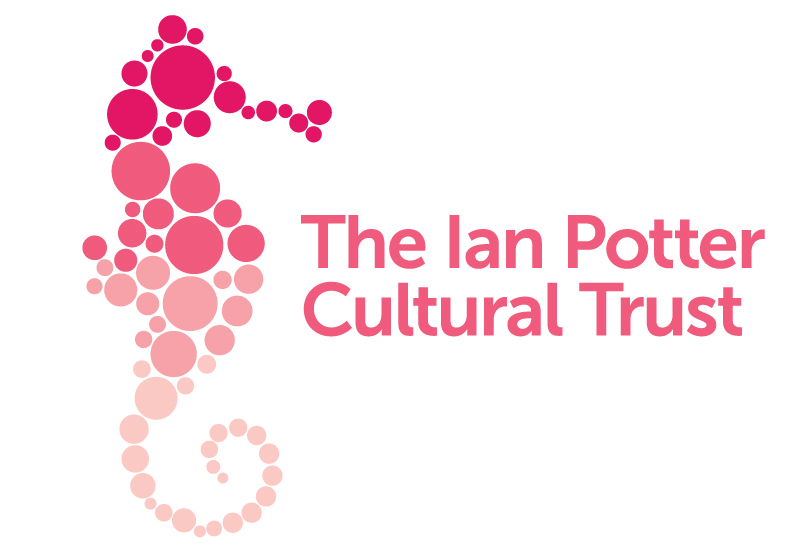
![]()
Producer: Bridget Ikin
Director of photography, Barka-Darling River: Meg White
Director of photography, AGNSW: Justine Kerrigan
Film editor: Sam Smith
Sound recordist: Daniel Miau
Sound editor: Liam Egan
Barkandji consultant: Uncle Badger Bates
Regional liaison/location manager: Justine Muller
Production coordinator: Mia Timpano
Production assistant: Lesley Holland
Videographer, AGNSW: Christopher Snee
Camera assistant: Cameron Dunlop
AGNSW conservators: Paula Dredge, head of painting conservation; Andrea Nottage, painting conservator; and Barbara Dabrowa, senior conservator of fine arts – frames



